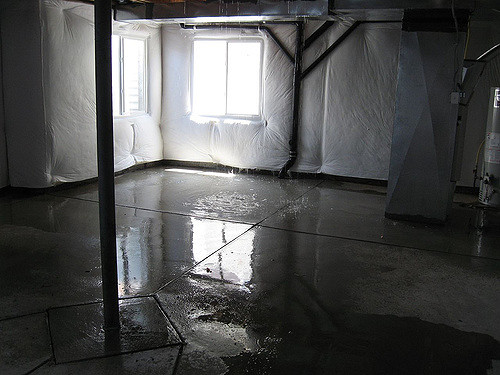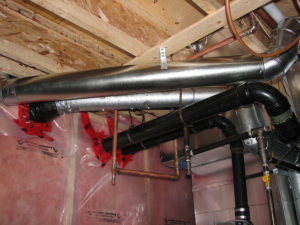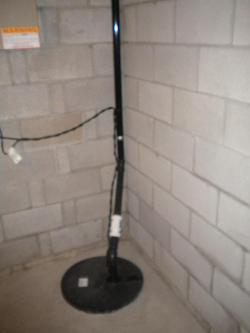Repairing a Wet Basement Without Breaking The Bank

A wet basement can conjure up images of damaged furniture, ruined flooring, and wading knee-deep through an unexpected torrent of water, but the worst one is what it’ll do to your bank account. For a lot of people, a wet basement usually means an empty savings account or a pile of bills.
That’s not always the case! Wet basement issues don’t always require expensive solutions, and many times the resources to solve or prevent leaks are within your budgetary grasp.
1. Make Sure Condensation Didn’t Cause The Wet Basement
The cause of the water in your basement might not need an expensive foundation fix. Water can pool because of indoor humidity or a leaky pipe, which won’t require intrusive solutions. One way to see if it’s humidity is to tape some foil to your wall and monitor it: if there’s moisture on the outside, all that might be needed is a decent humidifier!
Condensation from cold water pipes can also be the cause of dripping water; insulating these pipes is an easy fix. If you’re sure it isn’t a leak and the water isn’t coming from the outside, insulate the walls. If it’s coming from the outside, don’t insulate until it’s fixed – this is an expensive way to get mold.
2. Set Up Proper Drainage For Your Lawn
Keep the water away from the foundation by sloping the surrounding yard away from it. This is especially important to do before heavy rain or snow collects around the foundation, so that the water doesn’t leech down before you can deal with it. Creating a gradient around it can be a time-consuming process, but it’s easy to do yourself, and might save you a ton of headaches down the road. Much of the heavier equipment can be rented if need be.
Another drainage thing you can take of yourself is extending the reach of your downspouts. Dig a trench and add some pipe length. Get that water as far away from your home as possible!
3. Strengthen Those Walls
There are a lot of materials you can easily get at your local hardware or home building store that let you take care of any potential problems. Waterproofing sealer can go on just like paint, and it fills the holes, pores, and miniscule cracks that could widen and let moisture through (always follow the instructions and advice of those at the store!).
Hydraulic cement is another way to plug holes and is easily applied by even the most un-handy of men. It expands into any cracks, creating a super-tight seal, and it can be applied even in wet environments. Combining hydraulic cement and waterproofing sealer can definitely help you sleep easier.
 4. Advanced Waterproofing
4. Advanced Waterproofing
Sometimes, the best thing to do is take care of potential problems before they happen. If you’re a DIY kind of person, there are a lot of solutions that are more intrusive, i.e. setting up a sump pump and a more extensive drainage system. Bringing in a consultant to survey the basement might seem like an unnecessary expense, but they can tell you about problems you might not have noticed, and offer solutions you can easily take care of yourself.
So don’t be afraid to give us a call! When you take care of your basement ahead of time, it could be the most cost effective choice you make.
